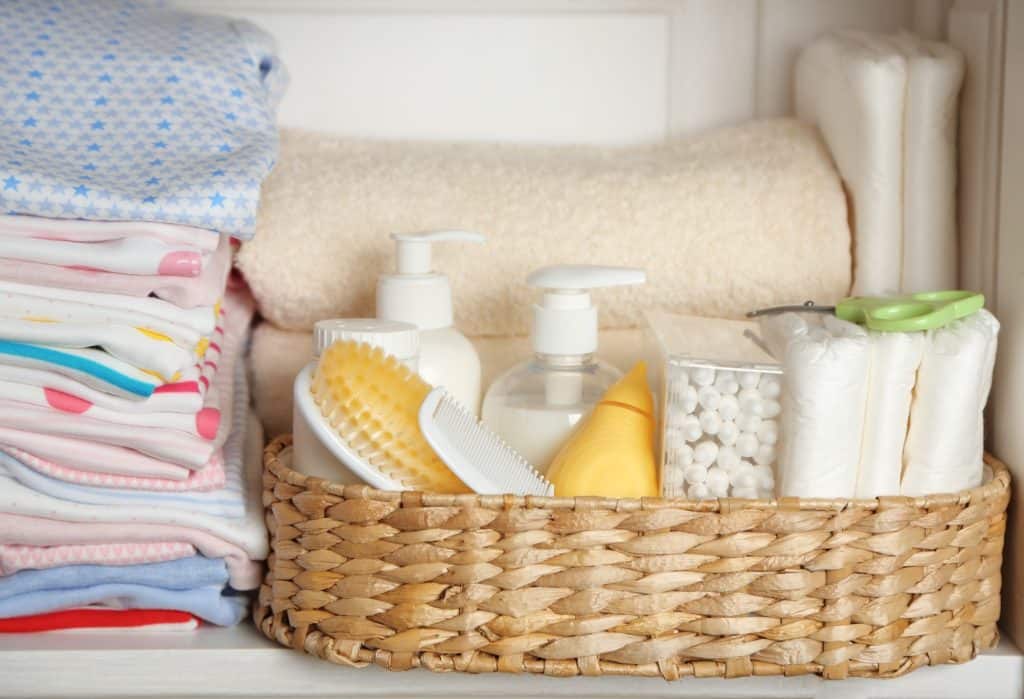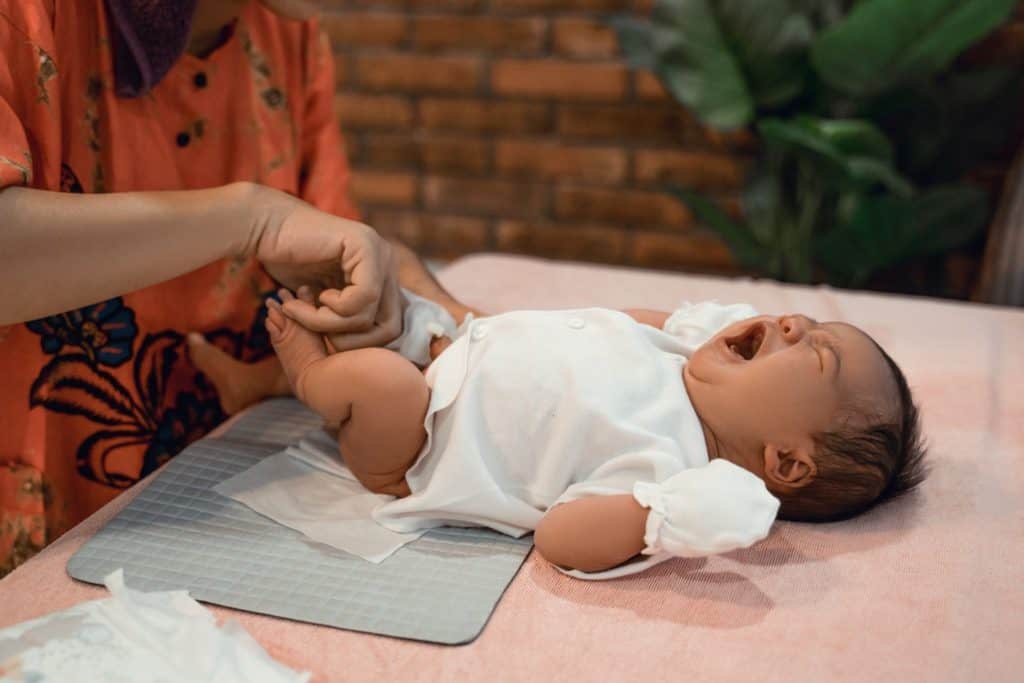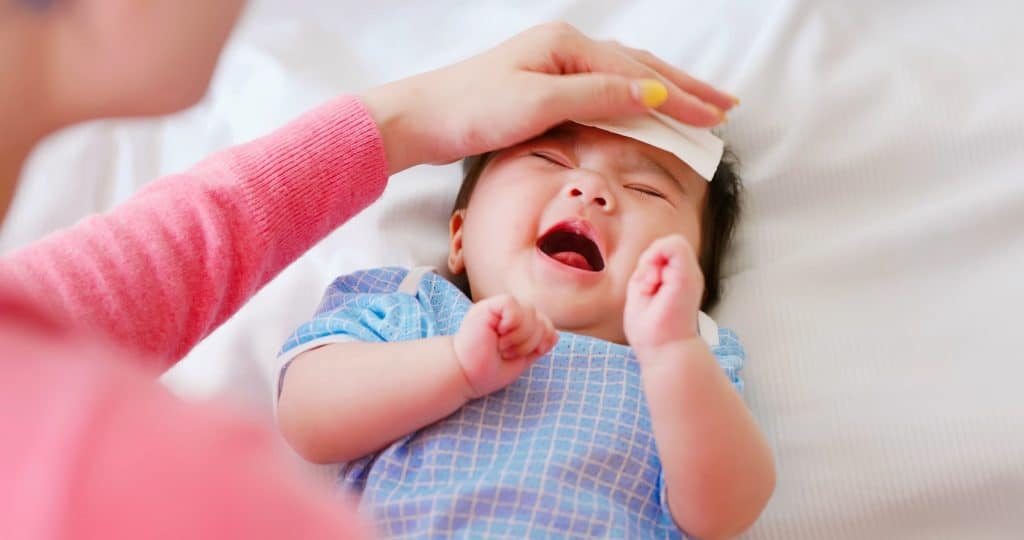Diaper rash is an extremely uncomfortable experience for your little one – when left untreated, it can even lead to health complications. It’s especially worrisome to see this when your baby has just come back from daycare. For parents who rely on these services, preventing diaper rashes in daycare is a crucial priority for your infant’s well-being.
Diaper rashes at the daycare may be caused by a few different reasons.
- A disparity in changing materials used between the home and the daycare.
- Improper or infrequent diaper changing.
- Increased germ exposure and heightened stress.
Diaper rashes at the daycare are a serious matter and can cause terrible pain for your child. If the daycare staff refuses to give it importance, you’d be better off without them.
Thankfully, there are various measures that can be taken to address potential causes of diaper rash at daycare, providing plenty of effective solutions for concerned parents. We’ll go over a few of them down below.
Common Diaper Rash Triggers at Daycare
Differences in Changing Materials Used

While it’s easy to assume that your daycare’s staff is neglecting your child, the crux of the issue may just boil down to a simple miscommunication.
The changing products being used at the daycare (i.e. wipes, powder, and diaper creams) could be different from what your baby is used to at home. If your baby isn’t used to these materials, it may irritate their skin and eventually cause these dreaded diaper rashes.
Each baby’s needs and potential allergies can vary – even twins are likely to differ here! These issues can crop up thanks to an abundance of factors. While we can’t discuss every possible cause of diaper rash in-depth, we’ll cover common contributing factors you should be aware of.
Chemical Irritants
Certain changing products used may contain chemical irritants – the most common culprits here are fragrances and alcohol-based ingredients. A baby’s skin is quite thin compared to adults and subsequently more prone to being agitated or even dried out by harsh chemicals.
Poor Diaper Fits
It’s also possible that the daycare is using oversized or undersized diapers for your infant. Undersized diapers will be unable to handle all of your baby’s bodily waste, while oversized diapers could make it tough for people to tell when your little one is due for a change – especially if the staff has to juggle supervising multiple infants!
Bad Diaper Creams
Lastly, certain diaper creams carry the unique risk of encouraging yeast growth in sensitive areas, creating painful diaper rashes that end up resistant to medical treatment. If the situation warrants the use of diaper cream, make sure to clear that specific brand’s use with your pediatrician first.
Solution
The best solution to this risk is standardizing the items in your baby’s diaper kit. All their changing products here need to be safe to use, gentle on their skin, and hypoallergenic. Providing your child’s caretakers with the right materials is your best bet for both consistency and safety.
Some daycares ask parents to provide the appropriate changing materials for their little ones, while other centers procure standardized supplies for the task. If your daycare acts more like the latter, it’d still be wise to provide the staff with the materials you’d normally use at home. It may be a little pricier, but it’s worth it to help prevent any stress-inducing diaper rashes.
Improper Diaper Changing Practices

On a more disappointing note, diaper rashes in daycare may be due to poor changing habits.
Daycare staff are swamped by responsibility, supervising anywhere between two to seven children (depending on age) at any given time. They may not be changing your infant’s diaper as frequently as they ought to – or they may be taking some bad shortcuts during that process.
Changing diapers too soon can be wasteful as it doesn’t allow the diaper to fully absorb the bodily waste. It also increases the risk of skin irritation and chafing, leading to worse diaper rashes.
Leaving your baby in a wet diaper for too long prolongs exposure to infectious bacteria and moisture, which in turn encourages skin irritation and even more bacterial growth.
The longer you wait, the greater the risk of diaper rash and the more agitated your little one will become, making them much harder to soothe. If your baby already has a diaper rash, things get even more challenging as your little one will end up way more sensitive to this irritation.
Improper drying of the affected area by daycare staff after changing diapers can lead to damp spots being trapped against the diaper, creating a moist environment that encourages bacteria and fungi growth. This can lead to diaper rashes in daycare, causing discomfort for your baby.
Solution
Unfortunately, there’s little you can do directly beyond raising this concern with the daycare staff and management. How they choose to respond to your feedback is out of your hands. Hopefully, the staff takes your concerns seriously and strives to make the appropriate changes.
If the problem persists despite your feedback, it may be better to consider other daycare centers. Daycares are responsible for vulnerable children, and if the staff is unwilling to address a parent’s concerns, there’s a possibility that also they’re neglecting other aspects of their duties.
Heightened Germ Exposure and Stress

Daycares are responsible for a large number of children from different communities, all interacting with the same set of caretakers in a relatively confined space. As a result, germ exposure risk ends up pretty high, leaving infants with weak immune systems susceptible to infections.
This problem gets heightened when the infant is constantly stressed or anxious! Infants under these conditions release a chemical called cortisol – the body’s main stress hormone. Chronic stress will debilitate their immune system, hamper their sleep cycle, and skew their appetite.
Solution
While germ exposure can never be fully curbed, it can be kept at bay with a combination of proper hygiene and health precautions. Be sure to ask the daycare staff about how they conduct themselves when handling multiple children at a time, along with the measures they take to minimize infection and cross-contamination risks between children.
On the parent’s side, these potential dangers can be blunted by ensuring that all of your child’s vaccinations are up to date. Be sure to thoroughly disinfect your infant’s toys and bottles before sending them off to daycare, just to play it extra safe!
If your infant is experiencing separation anxiety or chronic stress while at the daycare, you’ll need to take certain measures to ease them into the process.
We’d recommend giving your little one some sort of comfort item, like a blanket or a special toy they have at home. These tokens will go a long way to putting your child’s mind at ease while you’re gone and can keep their anxieties from compromising their delicate immune systems.
Be sure to let the daycare staff know if you suspect your baby has separation anxiety – it’s a common problem for children in daycare, so they’ll probably have experience dealing with it.
Final Thoughts
There are many potential causes of diaper rash in daycares, but some of the most common ones include differences in changing materials, poor diaper-changing practices, increased bacteria exposure, and chronic anxiety/stress.
If your infant has issues with diaper rashes at the daycare, inform the staff as soon as possible. This problem will only get worse over time, so address the situation promptly. If the daycare team doesn’t take your concerns seriously, don’t be afraid to explore better options elsewhere.